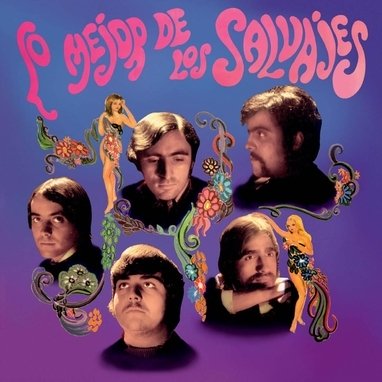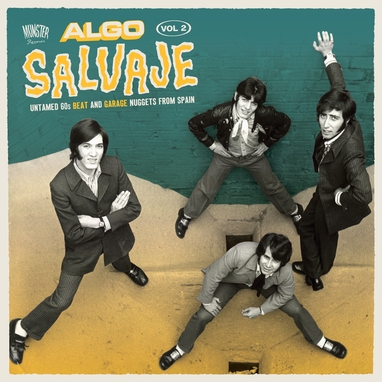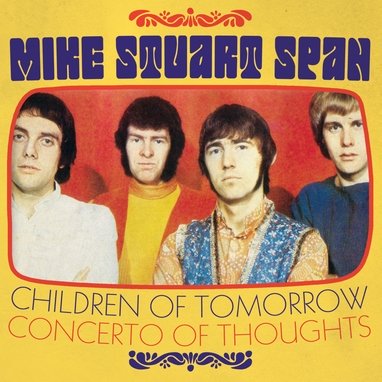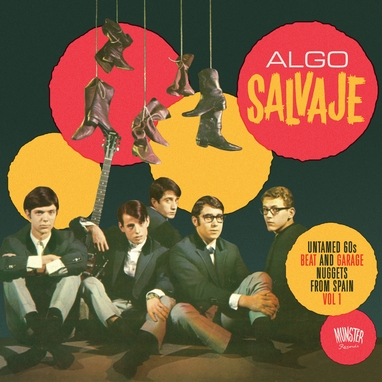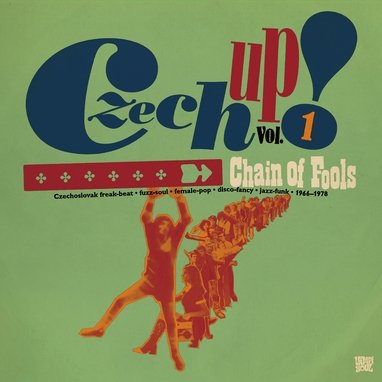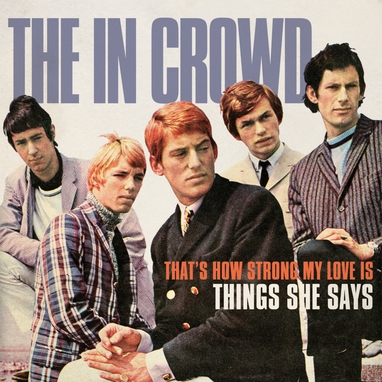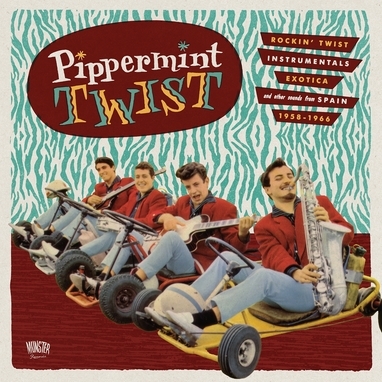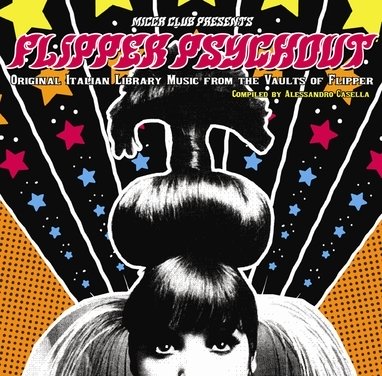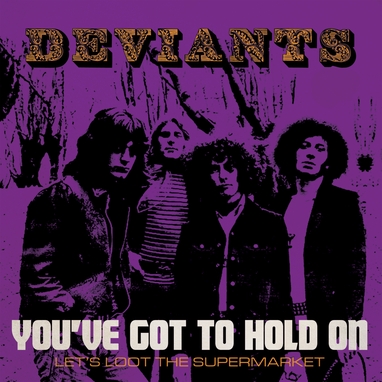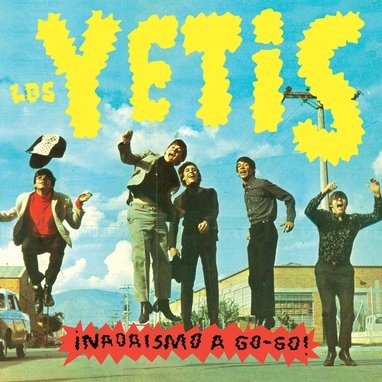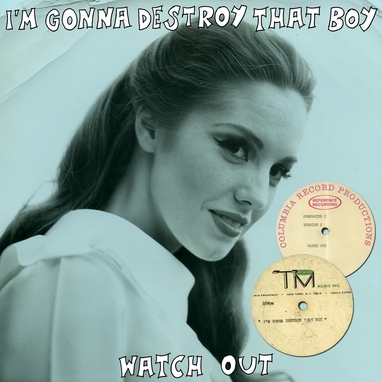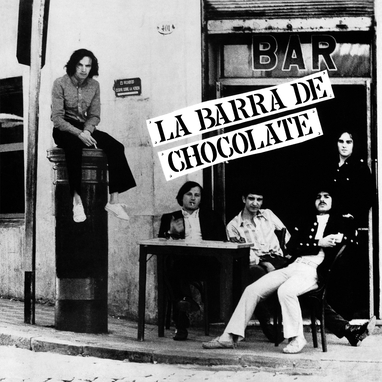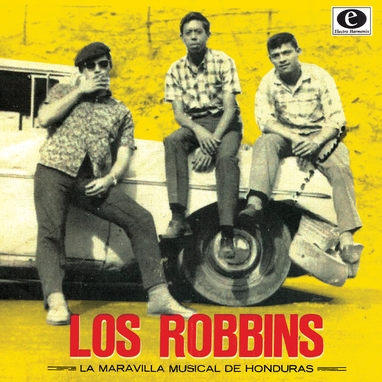Los Salvajes
Lo mejor de Los Salvajes
18,00€
Vinilísssimo
Los Salvajes
Lo mejor de Los Salvajes
One of the defining albums of Spanish 60s garage, reissued on vinyl for the first time. Originally released in 1967, “Lo mejor de Los Salvajes” compiles several tracks from the band’s then recent run of amazing EPs. Featuring mainly own songs plus a few choice covers, the LP displays the artistic exuberance they were enjoying at the time: R&B, freakbeat, psychedelia…
The first gig I ever witnessed took place in a cinema, and the band was no other than Los Salvajes. It would have been 1968, and I must have just turned 11. Precocious? Obedient, rather. My old man was the venue’s owner, and every Sunday he would hire it to promoters that organized musical matinees, featuring mostly popular and folkloric artists. Los Salvajes. To me, that name implied something spectacular, a tremendous event of incalculable proportions from which I didn’t know what to expect. As soon as the band walked onstage, the whole thing turned into chaos. I can still remember it, an initiation rite submerged in a loud roar. It was thunders from the gods to my childish eardrums, and it sent the projectionist’s cat up the curtain like a possessed missile. In the stalls, the rational beings ended up pulling out the seats and forming a pyre with them. They would have set the seats on fire if the Civil Guard hadn’t turned up. I didn’t understand a thing, but it wasn’t necessary. Subconsciously or consciously, I knew that I had witnessed something unique, phenomenal. Although I didn’t have a clue about what or who Los Salvajes were, at the time at the tail end of their peak, the impact they caused was enough to explain to me and anyone else why they were considered then and now one of the icons of 60s punk from Barcelona. “Lo mejor de Los Salvajes”, originally released in 1967, would be their only album. It was a sampler from the six EPs recorded by the band in 1966-67, with some of their biggest hits and a sound opened up to experimentation, thanks to the consent of EMI, their record label, due to the success of their previous recordings. Gone was the period of melodic or rock & roll covers, mainly of Italian and French songs. Los Salvajes went back to The Stones, plus The Troggs and Spencer Davis Group along with them, in an explosive aggiornamento with the kaleidoscopical British pop of the time. The decisive factor, however, was the increase of self-written songs, creating a sort of genetic backbone from which they would transcend, and which started with ‘Al Capone’, a minimal but robust R&B instrumental and the oldest track included in the LP. The gangster nod would be followed in their catalogue of originals by ‘Soy así’, an involuntary hymn of ye-yé self-affirmation and a first-rate nugget which referenced previous recordings such as ‘Satisfaction’ and ‘Al Capone’. Also with a generational viewpoint, ‘Es la edad’ made a similar point to ‘Soy así’, including the reference to long hair, but this time without the cocky stance, attributing their crazy attitude and silliness to their young age; all encapsulated in a rev up of progressive and mind-bending guitar. ‘Las ovejitas’ would be the peak of the lot, one of their collaborations with the radio presenter Luis Arribas Castro as lyricist and rhapsodist, who here is immersed in a dense freakbeat piece with which they teletransported to the UFO Club in technicolour dreams. With its hilarious defence of the moustache, the ‘Paint It Black’ soundalike ‘Mi bigote’ continued not only the band’s hair obsession but also their psychedelic dalliances, featuring a sitar. This track would put an end to their cycle under the Regal label, later moving on to La Voz de su Amo, another EMI division on which they would release notable singles, with original songs such as ‘El Don Juan’, before calling it quits in 1969. “Lo mejor de Los Salvajes” contains the whole productive artistic emancipation of Los Salvajes, marinated with a number of covers which aren’t lacking in worthy details: the homemade fuzz of ‘Corre, corre’, the fleeting psychedelic tricks that already appear in ‘Una chica igual que tú’, or the lyric adaptation of their excellent version of ‘Paint It Black’, translated as ‘Todo negro’, in which the protagonist crosses himself when facing the black future ahead, a completely current message nowadays, even if girls don’t wear op art patterns anymore. By the way, my father didn’t allow a rock show in one of his cinemas ever again. Jaime Gonzalo
Productos relacionados
18,00€
One of the defining albums of Spanish 60s garage, reissued on vinyl for the first time. Originally released in 1967, “Lo mejor de Los Salvajes” compiles several tracks from the band’s then recent run of amazing EPs. Featuring mainly own songs plus a few choice covers, the LP displays the artistic exuberance they were enjoying at the time: R&B, freakbeat, psychedelia…
The first gig I ever witnessed took place in a cinema, and the band was no other than Los Salvajes. It would have been 1968, and I must have just turned 11. Precocious? Obedient, rather. My old man was the venue’s owner, and every Sunday he would hire it to promoters that organized musical matinees, featuring mostly popular and folkloric artists. Los Salvajes. To me, that name implied something spectacular, a tremendous event of incalculable proportions from which I didn’t know what to expect. As soon as the band walked onstage, the whole thing turned into chaos. I can still remember it, an initiation rite submerged in a loud roar. It was thunders from the gods to my childish eardrums, and it sent the projectionist’s cat up the curtain like a possessed missile. In the stalls, the rational beings ended up pulling out the seats and forming a pyre with them. They would have set the seats on fire if the Civil Guard hadn’t turned up. I didn’t understand a thing, but it wasn’t necessary. Subconsciously or consciously, I knew that I had witnessed something unique, phenomenal. Although I didn’t have a clue about what or who Los Salvajes were, at the time at the tail end of their peak, the impact they caused was enough to explain to me and anyone else why they were considered then and now one of the icons of 60s punk from Barcelona. “Lo mejor de Los Salvajes”, originally released in 1967, would be their only album. It was a sampler from the six EPs recorded by the band in 1966-67, with some of their biggest hits and a sound opened up to experimentation, thanks to the consent of EMI, their record label, due to the success of their previous recordings. Gone was the period of melodic or rock & roll covers, mainly of Italian and French songs. Los Salvajes went back to The Stones, plus The Troggs and Spencer Davis Group along with them, in an explosive aggiornamento with the kaleidoscopical British pop of the time. The decisive factor, however, was the increase of self-written songs, creating a sort of genetic backbone from which they would transcend, and which started with ‘Al Capone’, a minimal but robust R&B instrumental and the oldest track included in the LP. The gangster nod would be followed in their catalogue of originals by ‘Soy así’, an involuntary hymn of ye-yé self-affirmation and a first-rate nugget which referenced previous recordings such as ‘Satisfaction’ and ‘Al Capone’. Also with a generational viewpoint, ‘Es la edad’ made a similar point to ‘Soy así’, including the reference to long hair, but this time without the cocky stance, attributing their crazy attitude and silliness to their young age; all encapsulated in a rev up of progressive and mind-bending guitar. ‘Las ovejitas’ would be the peak of the lot, one of their collaborations with the radio presenter Luis Arribas Castro as lyricist and rhapsodist, who here is immersed in a dense freakbeat piece with which they teletransported to the UFO Club in technicolour dreams. With its hilarious defence of the moustache, the ‘Paint It Black’ soundalike ‘Mi bigote’ continued not only the band’s hair obsession but also their psychedelic dalliances, featuring a sitar. This track would put an end to their cycle under the Regal label, later moving on to La Voz de su Amo, another EMI division on which they would release notable singles, with original songs such as ‘El Don Juan’, before calling it quits in 1969. “Lo mejor de Los Salvajes” contains the whole productive artistic emancipation of Los Salvajes, marinated with a number of covers which aren’t lacking in worthy details: the homemade fuzz of ‘Corre, corre’, the fleeting psychedelic tricks that already appear in ‘Una chica igual que tú’, or the lyric adaptation of their excellent version of ‘Paint It Black’, translated as ‘Todo negro’, in which the protagonist crosses himself when facing the black future ahead, a completely current message nowadays, even if girls don’t wear op art patterns anymore. By the way, my father didn’t allow a rock show in one of his cinemas ever again. Jaime Gonzalo
Productos relacionados
Lo mejor de Los Salvajes
One of the defining albums of Spanish 60s garage, reissued on vinyl for the first time. Originally released in 1967, “Lo mejor de Los Salvajes” compiles several tracks from the band’s then recent run of amazing EPs. Featuring mainly own songs plus a few choice covers, the LP displays the artistic exuberance they were enjoying at the time: R&B, freakbeat, psychedelia…
The first gig I ever witnessed took place in a cinema, and the band was no other than Los Salvajes. It would have been 1968, and I must have just turned 11. Precocious? Obedient, rather. My old man was the venue’s owner, and every Sunday he would hire it to promoters that organized musical matinees, featuring mostly popular and folkloric artists. Los Salvajes. To me, that name implied something spectacular, a tremendous event of incalculable proportions from which I didn’t know what to expect. As soon as the band walked onstage, the whole thing turned into chaos. I can still remember it, an initiation rite submerged in a loud roar. It was thunders from the gods to my childish eardrums, and it sent the projectionist’s cat up the curtain like a possessed missile. In the stalls, the rational beings ended up pulling out the seats and forming a pyre with them. They would have set the seats on fire if the Civil Guard hadn’t turned up. I didn’t understand a thing, but it wasn’t necessary. Subconsciously or consciously, I knew that I had witnessed something unique, phenomenal. Although I didn’t have a clue about what or who Los Salvajes were, at the time at the tail end of their peak, the impact they caused was enough to explain to me and anyone else why they were considered then and now one of the icons of 60s punk from Barcelona. “Lo mejor de Los Salvajes”, originally released in 1967, would be their only album. It was a sampler from the six EPs recorded by the band in 1966-67, with some of their biggest hits and a sound opened up to experimentation, thanks to the consent of EMI, their record label, due to the success of their previous recordings. Gone was the period of melodic or rock & roll covers, mainly of Italian and French songs. Los Salvajes went back to The Stones, plus The Troggs and Spencer Davis Group along with them, in an explosive aggiornamento with the kaleidoscopical British pop of the time. The decisive factor, however, was the increase of self-written songs, creating a sort of genetic backbone from which they would transcend, and which started with ‘Al Capone’, a minimal but robust R&B instrumental and the oldest track included in the LP. The gangster nod would be followed in their catalogue of originals by ‘Soy así’, an involuntary hymn of ye-yé self-affirmation and a first-rate nugget which referenced previous recordings such as ‘Satisfaction’ and ‘Al Capone’. Also with a generational viewpoint, ‘Es la edad’ made a similar point to ‘Soy así’, including the reference to long hair, but this time without the cocky stance, attributing their crazy attitude and silliness to their young age; all encapsulated in a rev up of progressive and mind-bending guitar. ‘Las ovejitas’ would be the peak of the lot, one of their collaborations with the radio presenter Luis Arribas Castro as lyricist and rhapsodist, who here is immersed in a dense freakbeat piece with which they teletransported to the UFO Club in technicolour dreams. With its hilarious defence of the moustache, the ‘Paint It Black’ soundalike ‘Mi bigote’ continued not only the band’s hair obsession but also their psychedelic dalliances, featuring a sitar. This track would put an end to their cycle under the Regal label, later moving on to La Voz de su Amo, another EMI division on which they would release notable singles, with original songs such as ‘El Don Juan’, before calling it quits in 1969. “Lo mejor de Los Salvajes” contains the whole productive artistic emancipation of Los Salvajes, marinated with a number of covers which aren’t lacking in worthy details: the homemade fuzz of ‘Corre, corre’, the fleeting psychedelic tricks that already appear in ‘Una chica igual que tú’, or the lyric adaptation of their excellent version of ‘Paint It Black’, translated as ‘Todo negro’, in which the protagonist crosses himself when facing the black future ahead, a completely current message nowadays, even if girls don’t wear op art patterns anymore. By the way, my father didn’t allow a rock show in one of his cinemas ever again. Jaime Gonzalo
One of the defining albums of Spanish 60s garage, reissued on vinyl for the first time. Originally released in 1967, “Lo mejor de Los Salvajes” compiles several tracks from the band’s then recent run of amazing EPs. Featuring mainly own songs plus a few choice covers, the LP displays the artistic exuberance they were enjoying at the time: R&B, freakbeat, psychedelia…
The first gig I ever witnessed took place in a cinema, and the band was no other than Los Salvajes. It would have been 1968, and I must have just turned 11. Precocious? Obedient, rather. My old man was the venue’s owner, and every Sunday he would hire it to promoters that organized musical matinees, featuring mostly popular and folkloric artists. Los Salvajes. To me, that name implied something spectacular, a tremendous event of incalculable proportions from which I didn’t know what to expect. As soon as the band walked onstage, the whole thing turned into chaos. I can still remember it, an initiation rite submerged in a loud roar. It was thunders from the gods to my childish eardrums, and it sent the projectionist’s cat up the curtain like a possessed missile. In the stalls, the rational beings ended up pulling out the seats and forming a pyre with them. They would have set the seats on fire if the Civil Guard hadn’t turned up. I didn’t understand a thing, but it wasn’t necessary. Subconsciously or consciously, I knew that I had witnessed something unique, phenomenal. Although I didn’t have a clue about what or who Los Salvajes were, at the time at the tail end of their peak, the impact they caused was enough to explain to me and anyone else why they were considered then and now one of the icons of 60s punk from Barcelona. “Lo mejor de Los Salvajes”, originally released in 1967, would be their only album. It was a sampler from the six EPs recorded by the band in 1966-67, with some of their biggest hits and a sound opened up to experimentation, thanks to the consent of EMI, their record label, due to the success of their previous recordings. Gone was the period of melodic or rock & roll covers, mainly of Italian and French songs. Los Salvajes went back to The Stones, plus The Troggs and Spencer Davis Group along with them, in an explosive aggiornamento with the kaleidoscopical British pop of the time. The decisive factor, however, was the increase of self-written songs, creating a sort of genetic backbone from which they would transcend, and which started with ‘Al Capone’, a minimal but robust R&B instrumental and the oldest track included in the LP. The gangster nod would be followed in their catalogue of originals by ‘Soy así’, an involuntary hymn of ye-yé self-affirmation and a first-rate nugget which referenced previous recordings such as ‘Satisfaction’ and ‘Al Capone’. Also with a generational viewpoint, ‘Es la edad’ made a similar point to ‘Soy así’, including the reference to long hair, but this time without the cocky stance, attributing their crazy attitude and silliness to their young age; all encapsulated in a rev up of progressive and mind-bending guitar. ‘Las ovejitas’ would be the peak of the lot, one of their collaborations with the radio presenter Luis Arribas Castro as lyricist and rhapsodist, who here is immersed in a dense freakbeat piece with which they teletransported to the UFO Club in technicolour dreams. With its hilarious defence of the moustache, the ‘Paint It Black’ soundalike ‘Mi bigote’ continued not only the band’s hair obsession but also their psychedelic dalliances, featuring a sitar. This track would put an end to their cycle under the Regal label, later moving on to La Voz de su Amo, another EMI division on which they would release notable singles, with original songs such as ‘El Don Juan’, before calling it quits in 1969. “Lo mejor de Los Salvajes” contains the whole productive artistic emancipation of Los Salvajes, marinated with a number of covers which aren’t lacking in worthy details: the homemade fuzz of ‘Corre, corre’, the fleeting psychedelic tricks that already appear in ‘Una chica igual que tú’, or the lyric adaptation of their excellent version of ‘Paint It Black’, translated as ‘Todo negro’, in which the protagonist crosses himself when facing the black future ahead, a completely current message nowadays, even if girls don’t wear op art patterns anymore. By the way, my father didn’t allow a rock show in one of his cinemas ever again. Jaime Gonzalo

